Olá a todos,
Estou abrindo este tópico, para ajudar aqueles que tiveram a dificuldade de encontrar um review de comparação decente, das câmeras compactas digitais da LEICA C-lux 2 e D-lux 3 (
Isso mesmo aquela marca famosa pelas suas camêras 100% manuais, feitas em metal, que duram a vida toda, silenciosas, fascinantes, lendárias...).
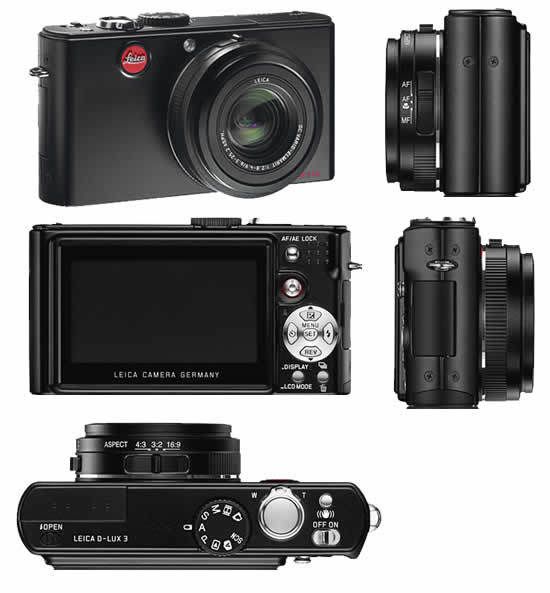
D-Lux 3

C-lux 1 (igual a C-lux 2, não achei foto de todos os angulos da 2, depois arrumo...)
Vamos lá, estava com uma grande dúvida de compra. Eu estava entre duas câmeras, a Leica C-lux 2 e a D-lux 3.
comparison between the Leica D-Lux 3 and the Leica C-Lux 2
For the past few years I've used the Leica D-Lux cameras as my preferred digiscoping tool in the Leica line up. The D-Lux cameras allow RAW format capabilities (which I actually never used) and a fantastic loupe feature in manual focus mode that insures sharp focus. However, since receiving my sample of the brand new C-Lux 2 camera, I've temporarily retired my trusty D-Lux 3 in favor of the more simplistic and sleek C-Lux 2 camera.
I will compare some specifications and features important to digiscoping below others can e found on the Leica camera site (www.leicacamerausa.com). Both cameras offer similar sensors, optical image stabilization, and large/bright screens (D-Lux 3 = 2.75", C-Lux 2 = 2.5"). The D-Lux 3 offers a whole host of manual operation controls, ability to shoot in aperture & shutter priority modes, etc. The C-Lux 2 does not offer the full range of manual controls but offers a variety of more simplistic auto modes instead: full auto, "simple" mode, "smart ISO", and a wide range of preset "scene modes". Both cameras offer video at 30 frames per second VGA, intuitive exposure compensation allowing +/-2 full stops, and easily activated 2 & 10 second delays. The D-Lux 3 has a bit more zoom with 35 mm equivalent range from 28 to 112 mm, while the C-Lux runs from 28 mm to 100 mm. Both at f/2.8 Leica lenses.
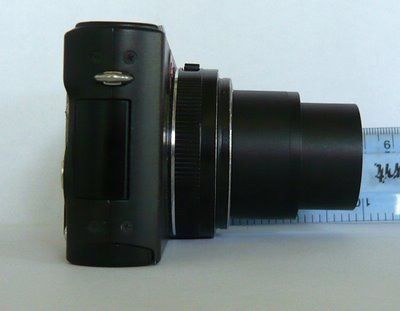
eica D-Lux 3 camera minimum zoom (wide angle)
Perhaps the single biggest difference affecting digiscoping performance is lens asssembly mechanics. The pictures above and below show the entire range of motion in the D-Lux 3 lens assembly when zoomed from wide angle to full telephoto (28 - 112 mm). When first powered on, the D-Lux camera lens assembly extends ~34 mm at wide (28 mm) angle. At full telephoto (4x/112 mm) the lens extends to near 49 mm.
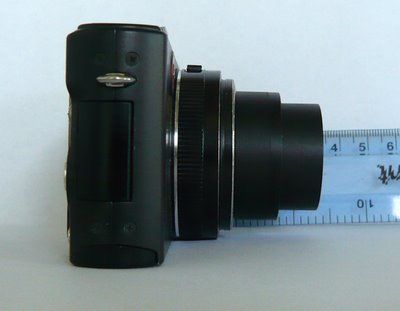
Leica D-Lux 3 camera maximum zoom (telephoto)
This 15 mm of lens extension requires that the adapter be slid back when zooming to prevent the camera lens from contacting the eyepiece. The protective limit switch on the small motor that drives the camera lens assembly is designed to shut off if it strikes a foreign object. So use of the D-Lux 3 requires an additional field craft component to insure the lenses don't collide when zooming.
By comparison, the C-Lux 2 lens assembly extends to ~26 mm when first turned on (see below). However, as you run the zoom from wide (28 mm) to telephoto (100 mm) the lens assembly retracts ~5 mm and then returns to the starting point at max zoom.
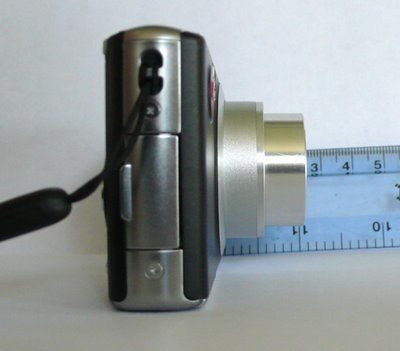
Leica C-Lux camera at minimum and maximum zoom
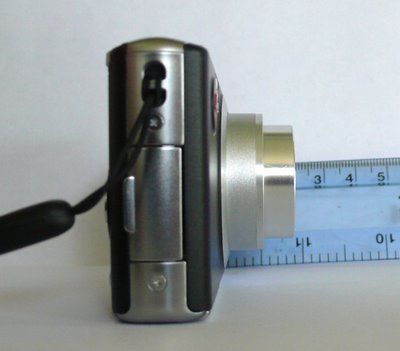
Leica C-Lux 2 lens assembly retracts 0nly about 5 mm and returns to starting point
Since the lens assembly does not extend beyond its starting point, the C-Lux 2 camera does not require readjusting the camera adapter. This makes use of this camera simpler, quicker, and it eliminates the possibility of the two lenses contacting one other. The shorter lens assembly of the C-Lux 2 also seems to be less prone to shadowing and vignetting than the longer lens on the D-Lux 3.
Below are a series of test images shot with both cameras at comparable settings. For this test, I placed a soda can at a distance of ~12 meters and used a Leica APO Televid 77 spotting scope, 20-60x zoom eyepiece, and digital adapter 2. I've made no changes to the original image beyond reducing each in size to fit on the blog.
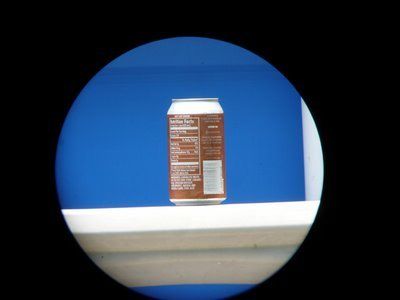
image 1
Image 1: Leica D-Lux 3 at 28 mm (1x) eyepiece at 20x. As typical when digiscoping with a wide angle camera lens and non-wide angle eyepiece (zoom) we see a strongly vignetted circular frame around the subject (if I'd used a 20x or 32x wide angle eyepiece this circle would be eliminated).

image 2
Image 2 shows the comparable settings on the C-Lux 2 camera (no zoom on eyepiece or camera). As expected the images are very similart although the circle on the D-Lux does appear larger.

image 3: D-Lux 3 camera at ~2x optical zoom, eyepiece at 20x

image 4: Leica C-Lux 2 camera ~2x optical zoom, eyepiece at 20x
Images 3 & 4 were taken at the point where most of the circular vignetting was eliminated near 2x optical zoom on both cameras. However, you will note more zoom was needed to eliminate the vignette with the D-Lux 3 (image 3), so the can appears larger. Also, there is more apparent shadowing in the corners of image 3 as compared to 4. So in conclusion the smaller C-Lux 2 eliminated the vignette quicker and more effectively.

image 5: Leica D-Lux 3 optical zoom maximum 112 mm, scope zoom 60x

image 6: Leica C-Lux 2 at maximum zoom (100 mm), eyepiece at 60x
At maximum zoom the D-Lux 3 offers a 35 mm equivalent of 6,720 mm (112 mm x 60x), and the C-Lux 2 only 6,000 mm, however you can see the effect of shadowing and the toll it takes on sharpness and color saturation. The truer colors in the C-Lux image (image 6) is typical of performance between these two cameras throughout the entire range of zoom. The C-Lux 2 seems to be completely devoid of shadowing/vignetting at any combination of optical zoom and eyepiece magnification. The D-Lux 3 seems to always show some shadowing at the corners throughout the range.
That said, I will continue to defend the D-Lux cameras as good options for digiscoping, and feel the resultant images I've taken over the past 2 years prove this. However, despite the lack of RAW and manual controls, I do find that I now prefer the ease/speed of operation and more consistent color the new C-Lux 2 provides. The fact that it is 2 ounces lighter, about 1/4 the size, and $100 less is just icing on the cake. Feel free to compare more sample images taken with both cameras on my wildlife image site:
http://www.flickr.com/photos/16435490@N00/
Fonte: http://www.birdwatchersdigest.com/leica/index.htmlBom com esta comparação feita pelo camarada
Jeff Bouton, Florida, eu consegui tirar muitas duvidas.
* Muitos podem falar que estas LEICAS são PANAleicas, e que não valem os 100 doláres a mais, no entanto estou ciente que existem diferenças entre a Panasonic e as Leicas.
- FIRMWARE
- Software
- Design da máquina
- Reconhecimento da marca
- Maior quantidade de acessórios personalisados (entre eles, lindos cases de couro da Leica).
- Garantia extendida
- Digamos que a desvalorização da câmera no mercado é menor que a Panasonic equivalente (mais fácil de se vender).
Mas realmente não quero causar polêmicas...
Tomara que tenham gostado e aproveitem!!!
Abraços.